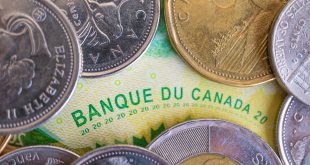As financial markets gear up for the central bank’s pivotal meeting next week, the US 10-Year Treasury yield is experiencing a slight dip, currently standing at 4.388%. This marginal decline of 0.012 percentage points, or 0.27%, suggests a subtle shift in investor sentiment as the countdown to key monetary policy announcements begins. While the broader stock market, with the S&P 500 eyeing new record highs, maintains its optimistic trajectory, the nuanced movements in the bond market signal a deep focus on the central bank’s imminent decisions.
The yield on the benchmark US 10-Year Government Bond, which matures on May 15, 2035, with a 4.25% coupon, is a crucial barometer of investor expectations regarding future interest rates and economic growth. Its current position below 4.4% comes as market participants widely anticipate that the central bank will keep interest rates on hold at its upcoming gathering. However, the true watch is on the subsequent remarks from the central bank’s chair. Every word will be meticulously scrutinized for any clues about the timing and magnitude of a potential interest rate reduction, with some analysts pinpointing September as a possible period for such a move.
Adding a layer of political context, recent comments from a prominent figure indicate no intention to pressure the central bank’s leadership, reinforcing its perceived independence in monetary policy formulation.
Global Yield Landscape:
The US 10-Year Treasury yield’s current level of 4.388% provides a fascinating contrast when viewed against its international counterparts (all with maturity around 2035):
Canada (CA10Y): 3.52%
Australia (AU10Y): 4.34%
United Kingdom (GB10Y): 4.62%
Germany (DE10Y): 2.71%
France (FR10Y): 3.38%
Italy (IT10Y): 3.57%
Japan (JP10Y): 1.60%
China (CN10Y): 1.74%
India (IN10Y): 6.35%
Indonesia (ID10Y): 6.52%
Brazil (BR10Y): 14.15%
This comparison highlights the varying economic outlooks and monetary policy stances across major global economies. The higher yields in emerging markets like Brazil, India, and Indonesia often reflect higher inflation expectations and perceived greater risk, while developed market yields like Japan and Germany are significantly lower, indicative of different economic growth and inflation dynamics.
Recent market commentary suggests that the US 10-Year Treasury yield has been influenced by a mix of factors. June inflation data, showing a 0.3% monthly increase or 2.7% year-over-year, alongside employment figures, has cooled some immediate rate cut hopes, leading to a slight easing of yields towards the end of the previous week. Trade tariff discussions have also introduced volatility, with capital occasionally flowing into safe-haven assets like US bonds.
As the US central bank meeting draws closer, the intricate dance between economic data, central bank rhetoric, and geopolitical developments will continue to shape the trajectory of bond yields and, by extension, the broader financial markets. The countdown is indeed on, and all eyes remain fixed on what the central bank will signal for the path ahead.

 Noor Trends News, Technical Analysis, Educational Tools and Recommendations
Noor Trends News, Technical Analysis, Educational Tools and Recommendations




